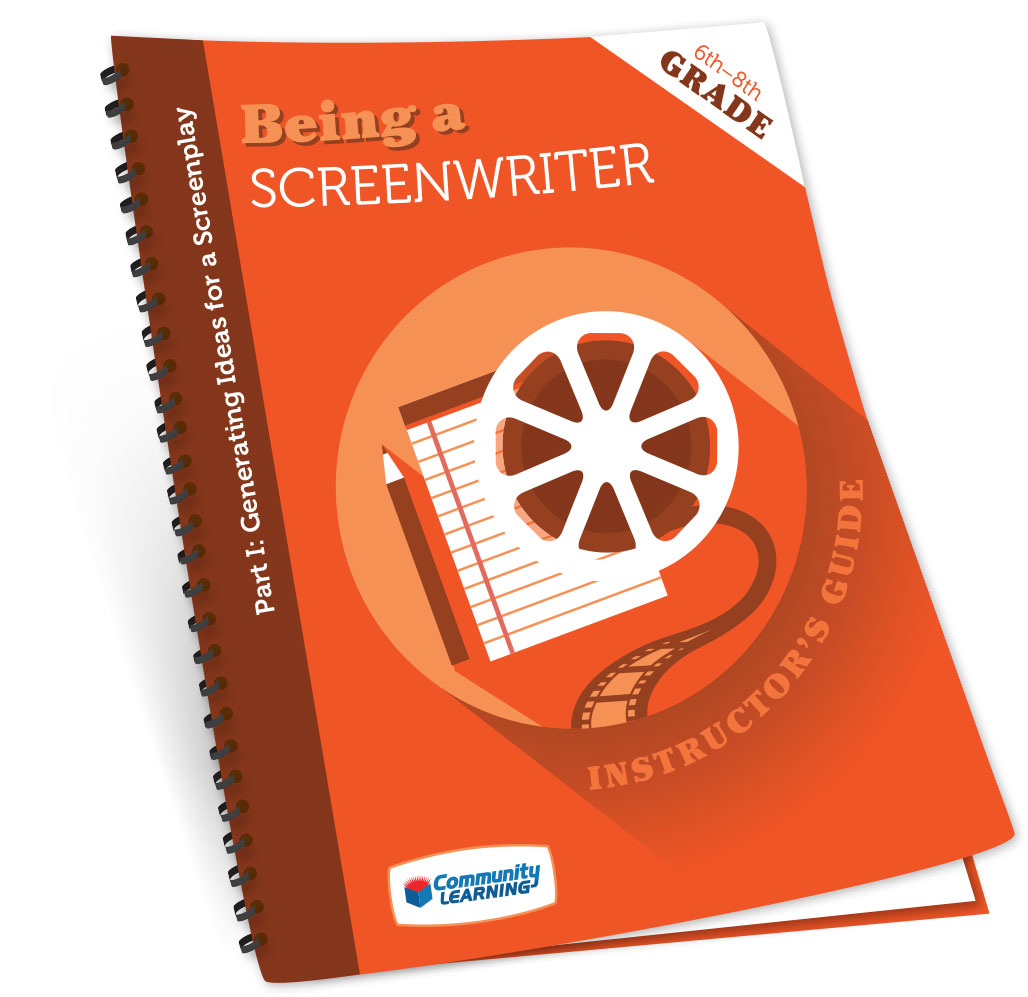Generating Ideas for a Screenplay Tutorial
1st Feb 2023


You have chosen to teach the Being a Screenwriter course because you want to see your students exercise their creativity and strengthen their writing skills.
This fun, engaging learning program gets right down to the business of developing scripts and encourages learners to brainstorm their experiences for a story idea. Students pitch their treatment to the class before proceeding to a final script!
The success of each lesson depends on teaching with clarity, listening attentively, being ready to help students understand new information, and encouraging productivity.
We have put together a series of lesson by lesson tutorials to assist you in the preparation stages of teaching the course. I hope you will use the tips and tutorials below to ensure that you are prepared to give your students the best experience possible with this course.
Tips, hints, and just plain great ideas!
|
|
Lesson 1 - The Kinds of Movies We Love: An Introduction to Genre and Theme Students dive right into the screenwriting process with this introduction to understanding genre, in which the difference between Dracula and Cinderella really counts! In preparation for this lesson, make sure that your DVD player is working and set up to play the correct clips. Also take a moment to plan out how best to divide your class into two teams. |
|
|
Lesson 2 - How Movies Work: The Three-Act Structure What if Dorothy (The Wizard of Oz) found herself surrendering to Darth Vader (Star Wars)? In this lesson, mixing up the elements of storytelling helps learners understand the classic structure of movies of all kinds! By now you should have shown the movie Home Alone to your class. This needs to be shown before you present this lesson. Keep in mind while preparing for this lesson that students will be working in groups of 4. You may want to consider skill levels and personalities before arranging these groups. |
|
|
Lesson 3 - The Story You Can Tell: Writing from the Heart Generating ideas for screenplays often represents a struggle between the heart and the head. Learners capture the best of both in this set of activities that use memories and photographs to jump start the creative process. Students will finally get to start writing creatively in this lesson. It is very important that they feel encouraged and comfortable during this process. Take extra care to offer compliments and kind words. |
|
|
Lesson 4 - The Brainstorm: Coming Up with an Idea The rapid-fire delivery of writing “prompts” in this lesson is sure to stimulate a swarm of new ideas. Most importantly, learners get the idea that inspiration can be found most anywhere—and that can always lead to writing something new! It is important to set a relaxed environment for your students during today's lesson. Perhaps allowing them to sit or lie down wherever they feel comfortable but productive will get their creative juices flowing. |
|
|
Lesson 5 - Bringing It All Together: Making Your Ideas Work “Story Stars”—an inventive activity that helps student screenwriters zero in on plot lines and story details—is at the center of this exciting lesson. Tabloid headlines also make a guest appearance in this lesson. Students will again be working in groups of four. Think ahead - would you like them to work in the same groups as last time, or with different kids? Will you allow them to chose their own group? Although there is no need for group consistency between lesson 2 and lesson 5, the groups that you create today should stay the same from now until the end of the course. |
|
|
Lesson 6 - Developing Characters: Who Will Your Story Be About? Characters come alive in this intriguing and revealing exploration of character development. Students discover new dimensions to character on “The Psychiatrist’s Couch”. Encourage students to have an open mind to allow ideas to flow while "sitting with the psychiatrist". |
|
|
Lesson 7 - Understanding Conflict: What Will Your Story Be About? Will the learners in your classroom craft stories with war, intrigue, disaster, crime, or failed romance is the heart of their stories? A return to familiar films introduces students to the concepts of analyzing conflict and its relationship to plot. This lesson involves some set up ahead of time. Read the preparation instructions thoroughly. |
|
Lesson 8 - The Hero/Heroine's Journey: Managing Conflict and Character Even the hero’s journey starts with a single step. Learners set off on the road to story-building in this important lesson that ties character and conflict in fun ways that stretch the muscles of imagination. Students will be working with a partner from their group for this lesson. Decide ahead of time if you would like to assign partners or let the students choose for themselves. |
|
|
|
Lesson 9 - Thinking Cinematically: Showing Rather than Telling The fundamental tool of screenwriting, the storyboard, is at the center of this introduction to cinematic thinking. As learners linking a chain of visuals in order to tell their stories, the principle of “show, don’t tell” makes good sense and great fun. There is some set up required for this lesson. Make sure that you are ready by reading the Preparation section carefully. The class will be playing a game of charades. Not everyone will feel comfortable with acting scenes out in front of a crowd. |
|
|
Lesson 10 - The Pitch: Writing Your Logline and Treatment Imagine a film: “Twenty young screenwriters compete to win a Hollywood contract for a movie about themselves…” Learners wrap up their creations for the Hollywood litmus test: the challenge of “loglines” and “treatments” is explored in this activity on the big studio pitch. Students will be doing some public speaking in this lesson. Encourage them to be professional as they are speaking, and courteous and respectful as they are listening. |
